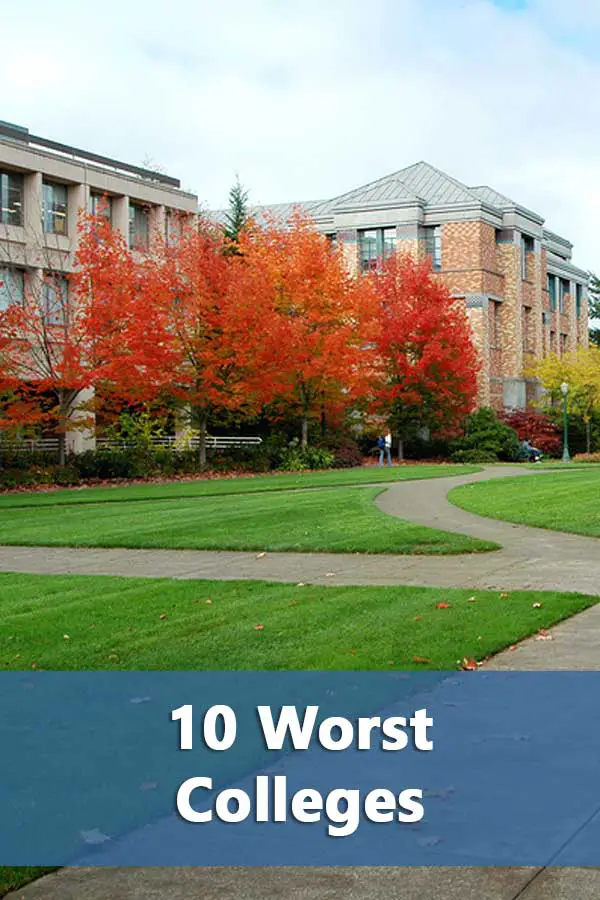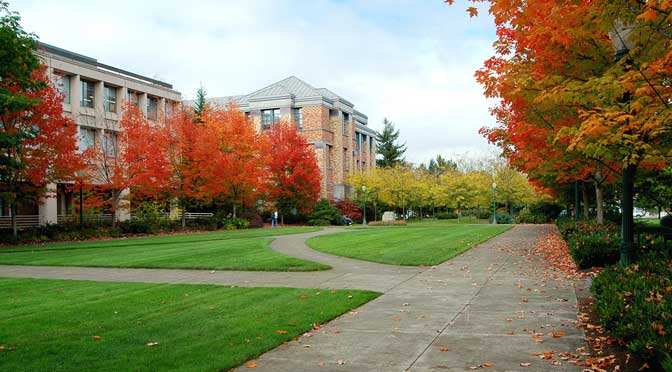
Listing the 10 Worst Colleges is a public service I’m providing as an inoculation against the annual fall media college ranking mania. It is a reminder that rankings are flawed and have their limitations. While they can provide useful information, too few people bother to look beyond the ranking order to evaluate the data used in creating the rankings.
To get an idea of what I’m talking about, let’s take a look at the following list of the 10 worst colleges (yes, there are more than 10 because of ties):
The 10 Worst Colleges 2022
| Name | Type | State | Rank |
| Wake Forest University | Private | NC | 1 |
| Bucknell University | Private | PA | 1 |
| Fairfield University | Private | CT | 1 |
| Bates College | Private | ME | 4 |
| Kenyon College | Private | OH | 4 |
| Worcester Polytechnic Institute | Private | MA | 4 |
| Scripps College | Private | CA | 4 |
| Tufts University | Private | MA | 7 |
| Villanova University | Private | PA | 7 |
| Santa Clara University | Private | CA | 7 |
| Colgate University | Private | NY | 7 |
| William & Mary | Public | VA | 7 |
Think something is missing? So you really do take the time to look at the methodology of the rankings when they’re released? Or is it that there’s no way you can believe the listed schools could be the worst at anything?
Download Comprehensive Application Tracker Spreadsheet for FREE
Worst Colleges Methodology
I’ll give you the benefit of the doubt and explain my methodology. There are 81 colleges and universities with 500 or more full-time undergraduates (excluding military academies and others with incomplete graduation data) that have a four-year graduation rate of 80% or better. (That’s right, out of over 1,600 4-year colleges, fewer than 100 graduate 80% of their students in four years.) The worst colleges have the lowest percentage of undergraduates receiving Pell Grants.
Is it Flawed?
Don’t think ranking colleges on a single variable is fair? Or at the very least, I should qualify the title somehow? But US News Best Colleges Rankings doesn’t say “based on the subjective opinion of higher education officials with incentives to game the system.” If the Board of Trustees goes “bananas” because of changes in the rankings, the administration is forced to pay attention. You have to wonder what message administration will take from the unranking of Columbia University. Make sure you submit the correct data or don’t worry about it and just hope you have no math professors on faculty paying attention?
Of course, most people wouldn’t complain if the rankings are causing schools to increase the amount of money the school spends on faculty and to recruit more desirable students. However, does it automatically mean that it’s providing a better education than those with less resources?
And given the revenue generated by the rankings, there is the question of US News’ incentive to tweak the rankings from year to year. What would happen if the top 10 schools declined to participate? More importantly, why haven’t they done so already?
Think I should provide more information on the variable such as the average for all schools or at least the range? Yet, Money Magazine’s Rankings doesn’t give any averages or ranges for its data. Users have no idea of the percentage of alumni found in the PayScale database for each school. For some schools, I would think there wouldn’t be enough listings to try to adjust earnings by major although it’s an excellent idea.
Furthermore, their methodology includes Peer Quality which is split between test scores and yield rate. I don’t understand why they bother since their focus is on outcomes. After all, you could argue that the best peers are the ones who get great jobs after graduation and offer plenty of networking opportunities. Do their test scores really matter then?
Compared to What?
But if you’re curious, for the 81 schools the percentage of undergraduates receiving Pell Grants ranges from 8% (down from 9% last year) to a high of only 25%, down from 32% last year. The average for all 4-year public and not-for-profit colleges with at least 500 full-time undergraduates is 34%, down from 35% last year.
Think that the comparison should include more than 81 colleges? But then how would I make sure that I compare colleges with similar resources and student quality? Do you really think that a public university with open admissions should be compared to an Ivy accepting less than 10% of students?
Keep in mind that the inputs the rankings are evaluating don’t always affect the outcomes in the expected manner. Of the 81 schools in my rankings, the acceptance rate ranged from a low of 5% to a high of 84%. Three schools spent an average of over $100,000 per student in instruction while five have averages under $15,000.
Yeah, there are all kinds of problems with my 10 worst colleges rankings.
However, there’s nothing wrong with the numbers–you just may not agree with how I used them to rank colleges as the worst. Of course, that was the point of this exercise.
When you use college rankings, stop and make sure you understand
- exactly what is being ranked;
- how the information is collected;
- and if the differences really matter to you.
Just in case you’re curious, the Best 10 Colleges would be:
The 10 Best Colleges 2022
| Name | Type | State | Rank |
| Princeton University | Private | NJ | 1 |
| University of California-Los Angeles | Public | CA | 1 |
| Amherst College | Private | MA | 3 |
| College of Saint Benedict | Private | MN | 3 |
| Wellesley College | Private | MA | 5 |
| Centre College | Private | KY | 5 |
| Hamilton College | Private | NY | 7 |
| University of North Carolina at Chapel Hill | Public | NC | 8 |
| Emory University | Private | GA | 8 |
| Franklin and Marshall College | Private | PA | 8 |
| Gettysburg College | Private | PA | 8 |
You can create your own rankings using the data from the DIY College Rankings Spreadsheet.



6 thoughts on “The 10 Worst Colleges 2022”